Chile is a country of vast diversity; the slender strip of land stretching from one of the driest deserts in the world, all the way down the western edge of the continent to the spectacular yet potentially hostile landscapes of Patagonia. We’d arrived in San Pedro de Atacama at the end of our three day 4×4 trip through Bolivia, and were happy to find a quaint little oasis of a town that thrives almost solely on its high tourist traffic. Yes, so its streets are lined with guest houses, hotels and hostels, with myriad tour companies offering essentially the same trips as every other tour company in town, but it still somehow manages to retain its charm. More to the point, it was warm!!! We’d woken up to a freezing morning in Bolivia, and yet here we now were, having descended over 2000m from the altiplano, completely over dressed and sweating into our backpacks!
Reaching Chile was also significant for a number of other reasons: 1 -we were now going to diverge for a while from places that I’d been to before, so we were back into exploration; 2 – it’s a much more developed economy and infrastructure than you find in Ecuador, Peru or Bolivia; and 3 – we were now half way through our time in South America and only six weeks from the end of our trip.

I think I have already mentioned that before we left home, I had the entirely unsubstantiated and utterly naive notion that with a ‘whole year to travel the world’, we could not only go anywhere and do anything, we could indeed go everywhere and do, yes you’ve guessed it, everything. Well, I couldn’t have been more wrong. In terms of South America in particular, I was certain that we’d take a long sweeping journey down to the far south of the continent to explore the incredible landscape and the famous glaciers. Right now, in San Pedro, was where we had to start to figure out if that was both a possibility, and something that we still actually wanted to do.
You see, as I alluded to in our last couple of blog posts, we were beginning to struggle a bit. Initially it was a bit of home sickness, then Bolivia came along and compounded it with actual sickness. If you multiply that with altitude sickness … well, you start to feel a little under the weather.
And then you meet all of these people who ask you if you’re going to Patagonia, and you look at them with what you hope is enthusiasm and say, ‘Well, yeah. That was the plan,’ trying not to emphasise the past tense too much. And they get all wild eyed and dreamy and say, ‘Oh yes, you have to. You must go. You’ll regret it if you don’t.’ And you look at a map and think, well, it’s not that far… because that’s what you thought when you looked at the distance between Quito and Cusco, and only found out later that it would take you three days to make the trip. On decent roads. With established bus routes. And comfortable buses. And obvious places to stop en route.

Going to the south of the continent, you’re going into the wilds, literally to the ends of the earth. To places where roads just run out, and you’re faced with complex journeys involving numerous boats and jeeps and all sorts of other things. And then there’s the weather of course, that could delay any means of transport indefinitely, and in an exponentially increasing scale of liklihood, the further south you go.
So yes, we had the conversations with other people willingly. We smiled, nodded, made enthusiastic noises, while all the time knowing that it was unlikely that we’d ever make it past Santiago. We did consider it for a while – we even made numerous attempts to hire a camper van or car to go exploring – but when it was all booked up, we weren’t too devastated, and therein was the ultimate truth about our mindset: we wouldn’t be going to Patagonia.
I don’t feel bad about that either, for the very simple reason that we were exhausted. If we’d made the trek down there, we’d either have been stuck in some accommodation somewhere too ill to venture out, or we’d make it onto a mountain trek and immediately wonder what on earth we were doing there, question why we were putting ourselves through it, and risk not even seeing the beauty of the world around us anymore. If we do ever venture to that region, it will have to be fresh, with energy and vigour. It would be foolhardy to make the trip otherwise.
San Pedro de Atacama
So what were we going to do?? Well, the answer to that was easy – it was time to drink some more wine! Yes, we had finally made it to the epicentre of South America’s wine production industry, and we were going to make the most of it.
But first, San Pedro – they don’t grow wine in the desert…but they do sell it! We only stayed a few nights in the town, which in hindsight may have been an error, but we still had the sense that there was quite a long way to go, and we shouldn’t be hanging around too long. We did have enough time to enjoy a couple of excellent restaurants though, sharing a meal with Andrew to celebrate the end of our salt flats tour and discovering Carménère in the process (more on that in a minute).
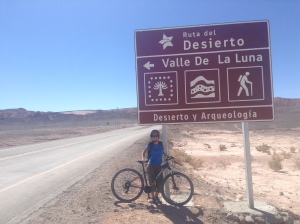
Valle de la Luna
You also have a chance to explore some pretty other-worldly landscapes in order to work up a thirst! The impressive Valle de la Luna – the Valley of the Moon – is not named, as I thought, for something to do with moonlight, or a nocturnal occurrence, but rather because the landscape itself has a rather lunar-esque appearance.
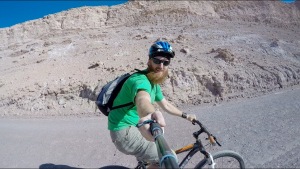
We decided to get a bit active, hiring mountain bikes to cover the ten mile journey to the valley. Leaving at 3pm, we’d have enough time to explore a bit, before climbing up to one of the high ridges to watch the sunset. It is a stunning place, especially the salt caves. There is a section of what looks like a small mountain range that is made up of mineral and salt deposits, rather than rock. Then, on the occasions when the desert receives rain (which is clearly not that often), the resulting streams dissolve the rocks (for want of a better word) and create spectacular, sweeping and sprawling underground cave systems that you can crawl through, with a little squeeze.
The sunset across the valley is also fantastic, and you get a lot of people up on the high ridges, finding a little spot of their own from which to survey the scene. With the sun setting in front of you, and the panorama of volcanoes behind you, merging and blending their palette in the falling light, it is hard to know which way to look! Since we got up there on bikes though, we couldn’t hang around after the sun had set because in the desert, it gets very dark, very quickly!
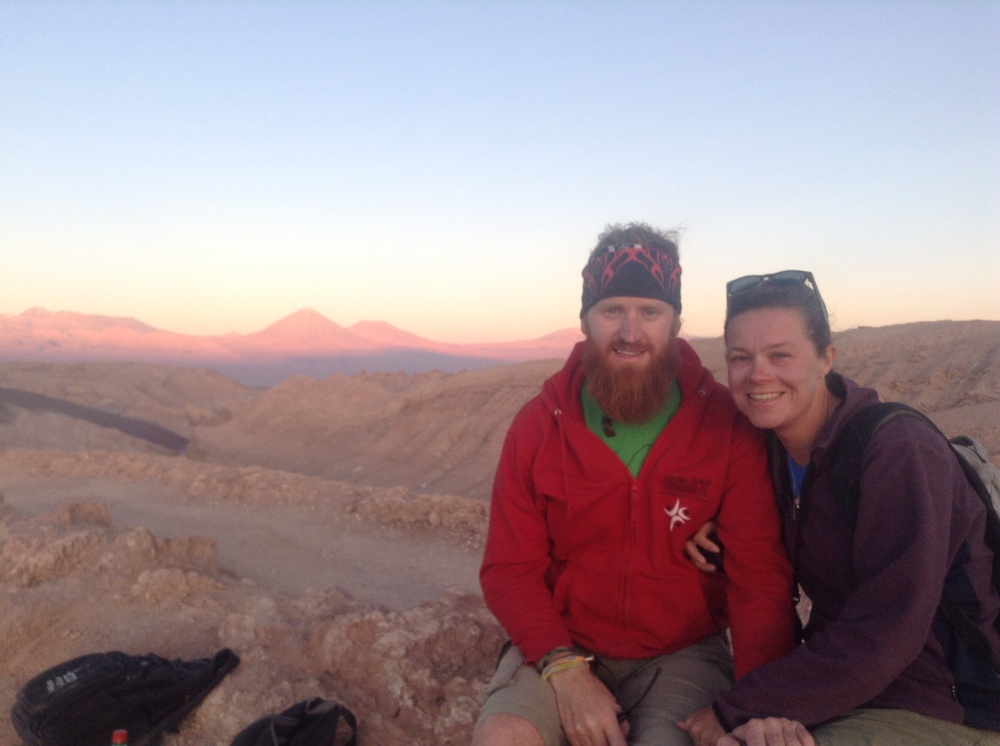
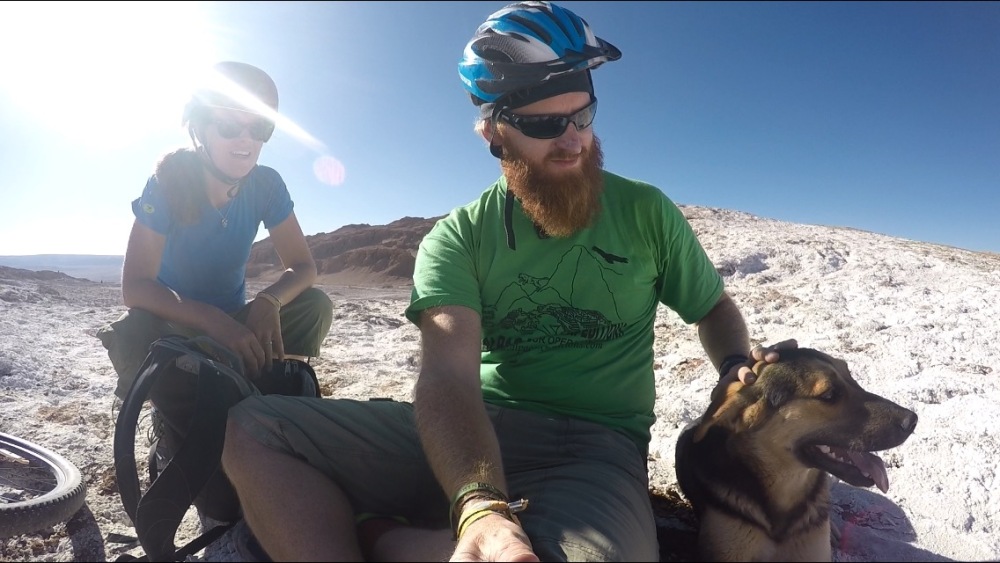
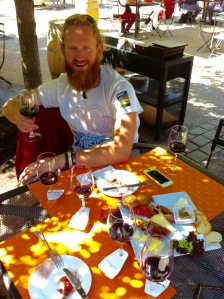
Take me to the vineyards!
Catching yet another overnight bus (this was our fifth in South America so far), we headed to the capital, Santiago, to be greeted by a vibrant, modern city. Notably, it’s also a place where the cyclist thrives, with thousands people dodging the gridlocked traffic on their two-wheeled machines. As much as it is a good place to explore for a few days though, let’s not pretend that we were there purely for cultural reasons; our main motivation was the world famous Chilean wine industry! We had such an amazing time in the Hunter Valley in Australia, that we were very excited to see what Chile had to offer.
Within striking distance of Santiago, you have three of the main wine producing regions: Maipo Valley, Colchagua Valley and Casablanca Valley. With a little research, we liked the look of Colchagua, but it was proving to be logistically difficult; either we’d have to book a wine tour, that was going to be expensive by anybody’s standards, or we’d have to try and hire a car and take ourselves around. Now, I don’t know about you, but for us, the merry bonus of a day out wine tasting, is returning home happily pissed. Hiring a vehicle for one of us to drive then, was ruled out. As were the all-in tour packages. In fact, Colchagua as a whole, seemed to be turning out to be a lot of faff.
Our other option, was to visit the Maipo Valley, which sits very close to the south of the city, and to which you can take much more reasonably priced bike tours: bikes and wine, a perfect day, surely? Well, despite being a better price, it still seemed a lot for what you were getting (especially since we still had vivid memories of the free tastings offered by all the vineyards in the Hunter Valley), and the brutal honesty of it was that we were not really that interested in a tour of the vineyard, and an explanation of the wine-making process … we just wanted to taste the wine! So, when we found that we could get to two of the largest vineyards in the region for about £2 on the metro, it was decision made!
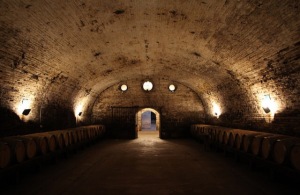
We hopped on to the tube, and forty minutes later, arrived at Cousiño Macul, a vineyard we’ve never heard of but is reputably a local favourite. We used the money we’d saved by not booking a tour … to book a tour! I know that sounds backwards, but if you get yourself to the vineyard, you can take their premium tour for less than the price of the bike/wine combo package. And it’s exactly the same except that you don’t ride a bike anywhere, but you do get to taste more wines, and they are combined with cheeses too. Saying no more about money, the premium tour at Cousiño Macul was well worth it: six beautiful wines, well explained by the guide, along with a cheese for each. Fabulous!

Perhaps here is the point to bring up the Carménère. We had never even heard of this wine, and I’m guessing most of you haven’t either. Well, that’s not surprising, as although it was once a big grape in Europe, the entire variety was wiped out by a plague in 1867 and was presumed extinct. Over to my good friend Wikipedia for a moment:
Far from being extinct, in recent years the Carménère grape has been discovered to be thriving in several areas outside of France. In Chile, growers almost inadvertently preserved the grape variety during the last 150 years, due largely to its similarity to Merlot. In 1994, a researcher at Montpellier’s school of Oenology found that “an earlier-ripening vine was Bordeaux Carménère, not Merlot”. The Chilean Department of Agriculture officially recognized Carménère as a distinct variety in 1998.
Put simply, the Chileans had imported Carménère vines, got them mixed up with Merlot and been selling the wine made from them as such for a hundred and fifty years – which I think is brilliant! Now, Chile produces the vast majority of the Carménère on the market, and you find it in on the wine list in almost every restaurant. Having discovered it, we also discovered a taste for it, going on to select it numerous times over the rest of our stay in Chile – a stay which, as I’m sure you’re beginning to realise, was heavily characterised by the consumption of red wine!
The Devil’s Cellar
After finishing the Cousiño Macul tour, we realised that we could reach Concha y Toro in the same afternoon – also on the metro! And since the only thing better than a trip to a vineyard, is a trip to two vineyards, we went for it. You’ll most probably recognise the name as their wines line the shelves of many a UK supermarket, particularly their brand Casillero del Diablo.
Once again, with little inclination to visit the vineyard itself and much more interest in tasting their produce, we managed to talk our way around the offers of a tour and into their wine bar, which is set in a beautiful paved courtyard.
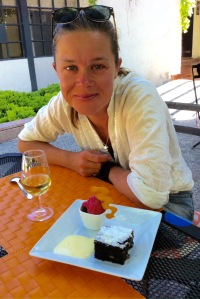
Once there, you can order from their lunch menu and their extensive wine list. Putting the emphasis firmly on ‘tasting’ rather than ‘drinking’, we ordered their flight of premium red wines – which gifted us with a Merlot, a Syrah, a Cabernet Sauvignon and, of course, a Carménère – and a pair of Don Melchor Cabernet Sauvignon, one 2009 vintage and the other a 1991, reputedly ‘the best Cabernet in the continent’. Well, that was some claim!
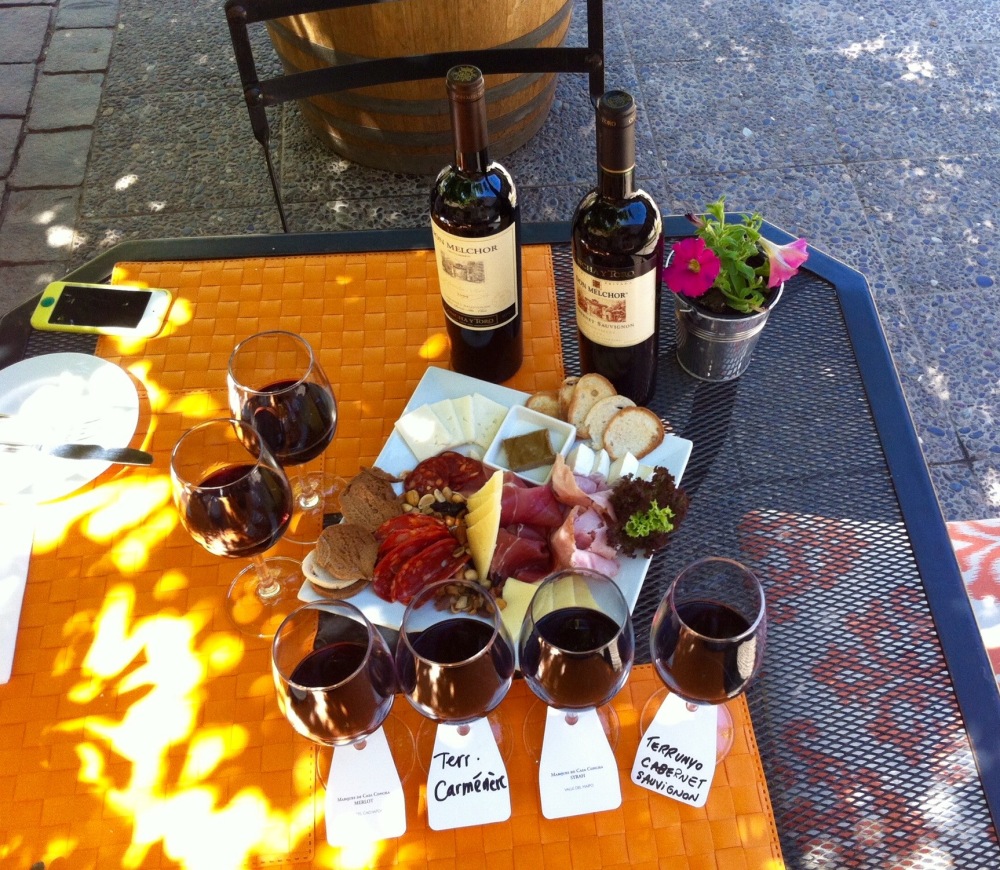
As it happens, it turns out our palettes aren’t quite ready for wines that are almost as old as we are, not really enjoying the super soft tones of the 24 year old wine. We much preferred the brighter, more robust, younger wines, the pick of which was probably the Carménère. I have to say, though, that the Concha y Toro experience was superb. We would usually be a little skeptical about such a large place, often preferring the smaller boutique wineries, but the people in the wine bar were so welcoming, so knowledgeable, so giving of their time, despite clearly being very busy, that we left feeling that we’d had an excellent lunch and a very genuine experience.
Then on the way home on the metro, a pickpocket stole my iPhone and my iPod. Damn. There’s no point in writing anymore about it, but it did leave a sour taste in our mouths.
An unexpected meeting
Keen to round out our experience of Chile a bit, and armed with three bottles of wine from Concha y Toro, we headed towards the coast to the chaotic but artsy Valparaiso. Checking into a bizarre little hostel, we wandered round the corner to a restaurant that had been recommended in the guide book. It was a bustling little place full of retro decor, but there was a table free by the window. As soon as we sat down, Helena, looking over my shoulder, said, ‘That’s Rob Mundy!’
Rob is a friend from the triathlon club back in Birmingham and he too had been travelling around with his fiancé, Jen. As they were just finishing their meal, and we’d only just arrived, we quickly said hello and shared a few, ‘Oh wow, that’s so random’ kind of sentiments, before arranging to meet up the following evening for drinks.
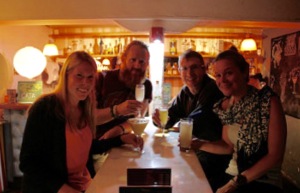
Which we did, in a pisco bar just up the road, where we proceeded to drink quite a lot of pisco before heading down into the town in a futile attempt to alleviate the impending drunkenness. It was a lot of fun, and we decided to go for dinner the following evening, which we did. We shared pizza and yet more Carménère, and chatted about travels, and home, and everything else.
It was such a good feeling to be with people that we actually knew! I mean, we love meeting new people, and we’d been meeting more and more as we got further into our travels, but there comes a point in every trip where the standard set of questions – ‘Where are you from? How long have you been travelling? Where are you going next?’ – get met with less enthusiastic answers than they deserve.
So our Valparaiso time was enhanced hugely by spending a lot of time with Rob and Jen, which was great. We did also do a fabulous cooking course, which involved a trip around the market, selecting produce, before returning to the kitchen to cook a selection of Chilean dishes, including an excellent Ceviche, a fantastic Pebre and some classic empanadas. You can look forward to a recreation of some of these when we get home!
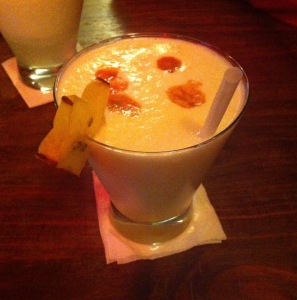
This course also had a heavy influence on drinking, with Pisco accompanying the starter, white wine the ceviche and red the main course.
I wish I could share some pictures with you, but all of our stuff from Valparaiso and the cooking class were on the camera that we were to lose three days later. We do luckily have some excellent shots shamelessly stolen from Rob’s selection though, so I’ll share those below. As for our feelings about Chile … well, I’m not sure I’ve quite forgiven the pickpocket yet, and we know we barely scraped the surface in terms of the diverse experiences you can enjoy in the country, but we did enjoy it, and I should probably forgive and forget as, after all, they do make some amazing wine!
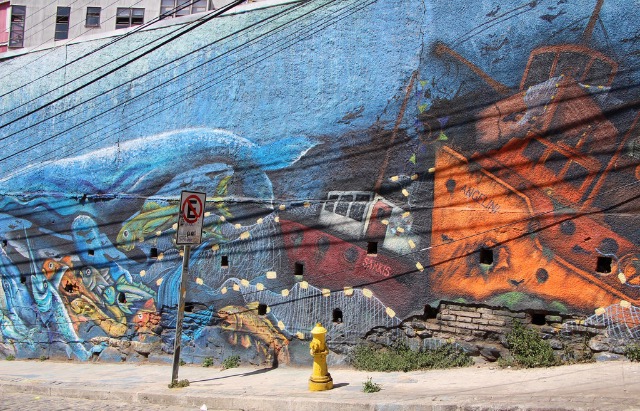
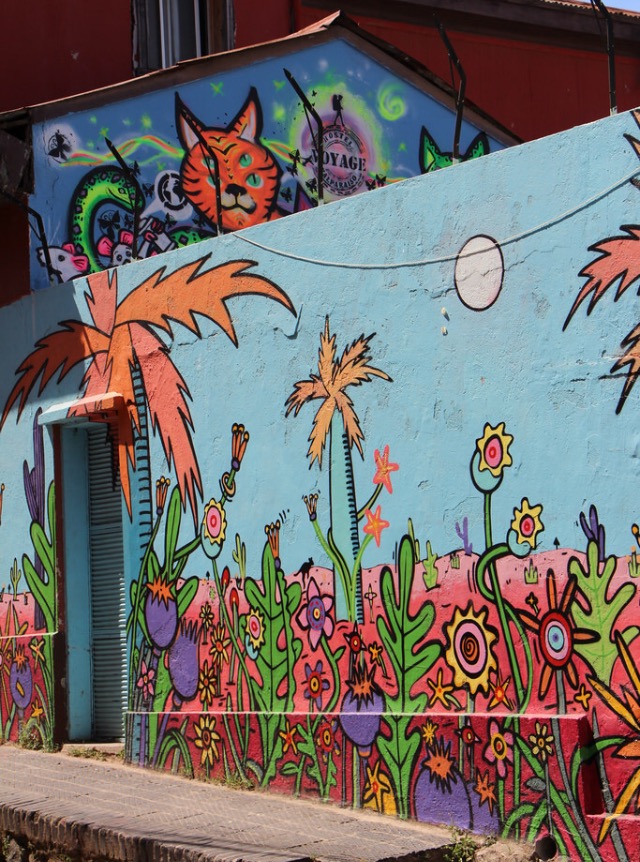

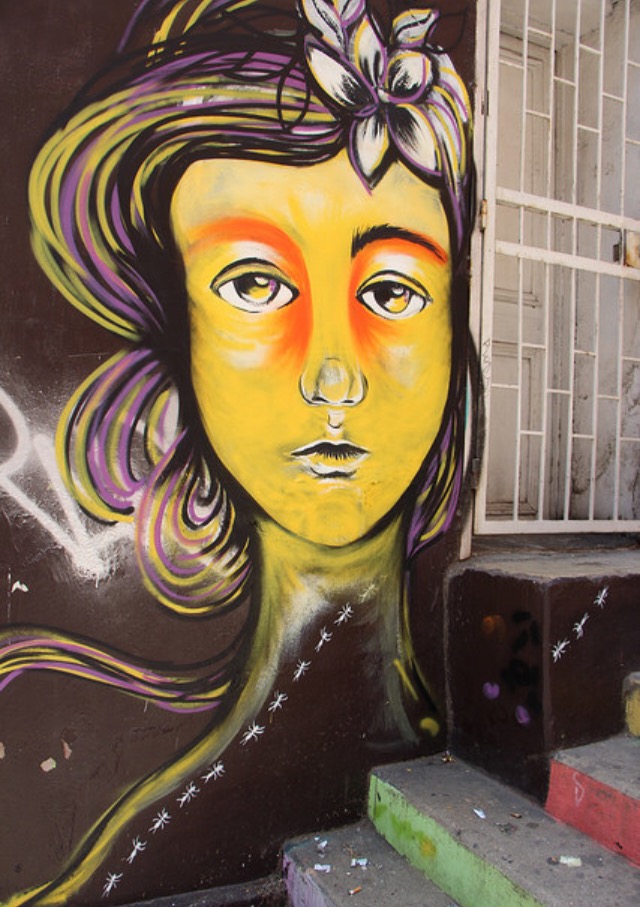

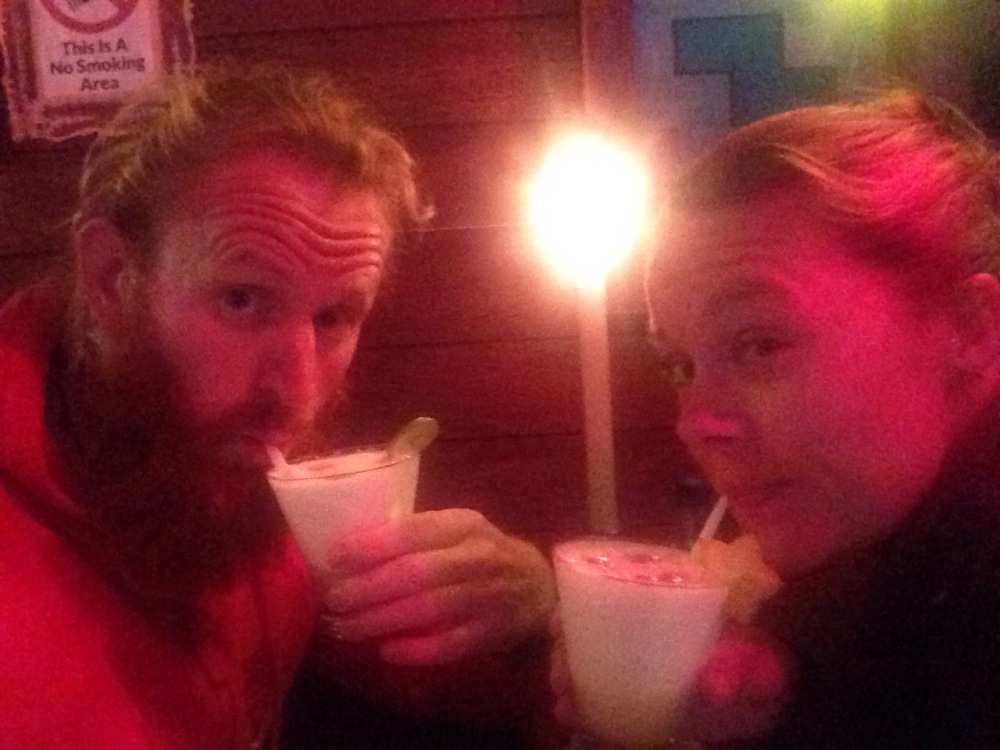




Ok – so I’m expecting a different wine for each course of Christmas dinner though I can’t imagine you’re bringing it with you!! Mum x
LikeLike
It’s about the only thing we want to be able to bring back!! We’ll happily go shopping for a selection of wines for Christmas dinner though, of course!
LikeLike
Wow amazing to have bumped into Rob! Such a small world 🙂 sorry to see you’ve been poorly, hope the wines helps! Looking forward to seeing you both. Please bring some sun back with you!! Xxx
LikeLike
I know, random but so nice to spend time with friends! The wine definitely helped though, and yes, we’ll put some of the Rio sun in a bottle and pack it safely xx
LikeLike
Crazy that you bumped into Rob, such a small world!! Sorry to hear you’ve been suffering a bit with illness. I’m sure your mummies will fatten you up at xmas. Can’t wait to see you both soon. Xxx
LikeLike
I just replied to your other comment…! This one has the ‘fattening up’ comment though, so I’ll say ‘hell yeah’ to this one too!
LikeLike